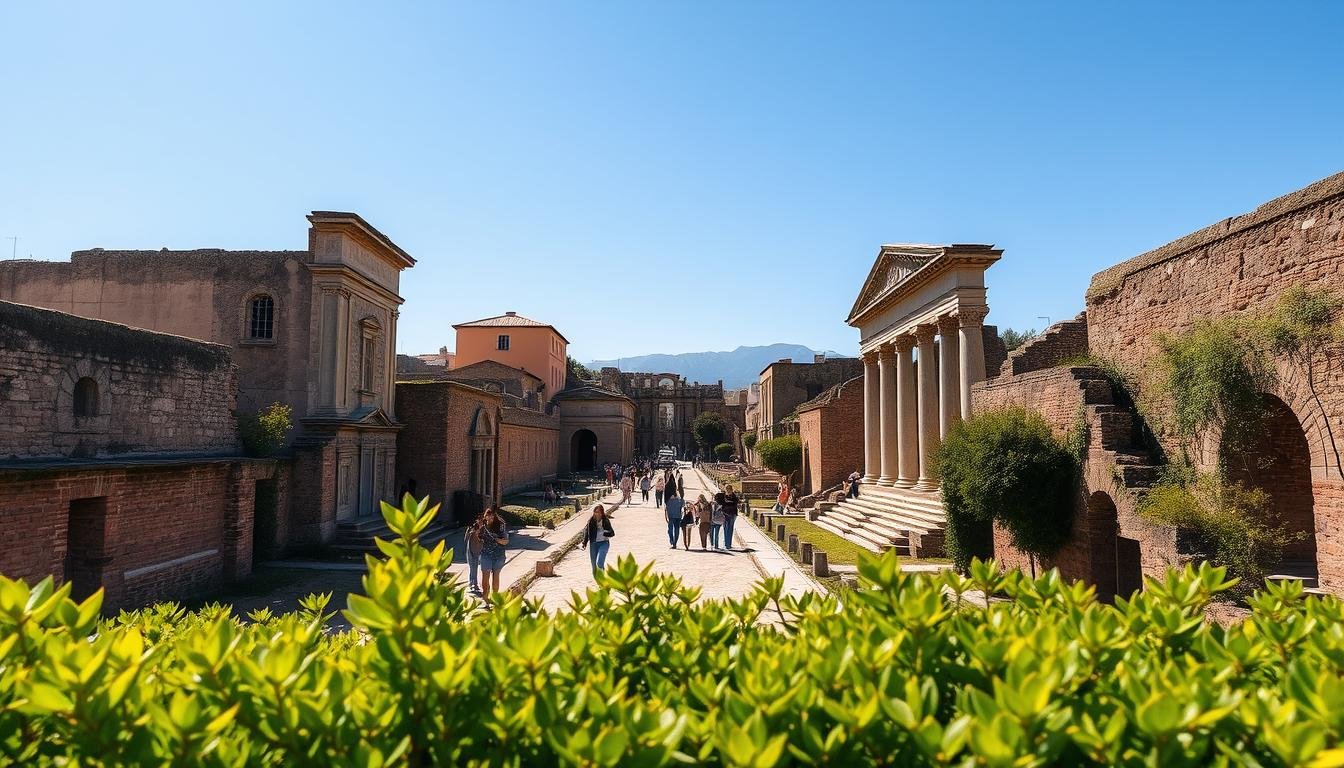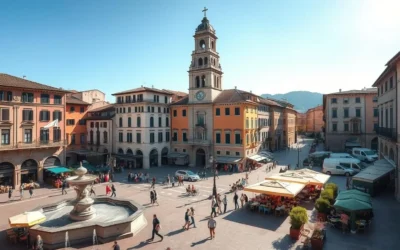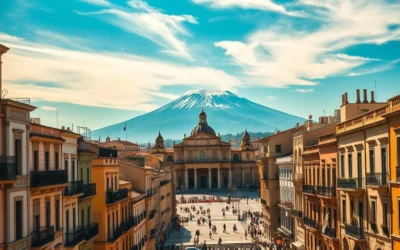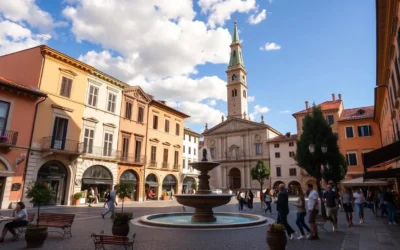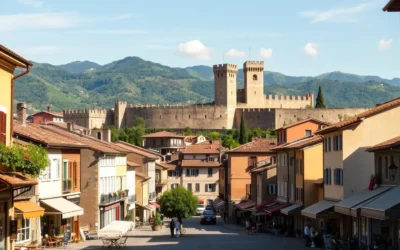Did you know that over 2.5 million people visit Pompeii each year? This ancient city, frozen in time by the eruption of Mount Vesuvius, is a must-see for history lovers. But with so many visitors, timing your trip is key to enjoying the experience.
The weather plays a big role in your visit. Summers can be hot and crowded, while cooler months offer a more comfortable experience. Planning around the season ensures you avoid the worst of the heat and the largest crowds.
Choosing the right time to visit can make all the difference. Whether you’re exploring the ancient ruins or strolling through the city, knowing what to expect helps you make the most of your trip. Let’s dive into the best months to visit this incredible site.
Understanding Pompeii’s Climate and Historical Charm
Exploring the ancient streets of this historic site offers a glimpse into a world frozen in time. The weather here plays a significant role in shaping your experience. From the scorching heat of summer to the cooler, more pleasant days of spring, each season brings a unique mood to the site.
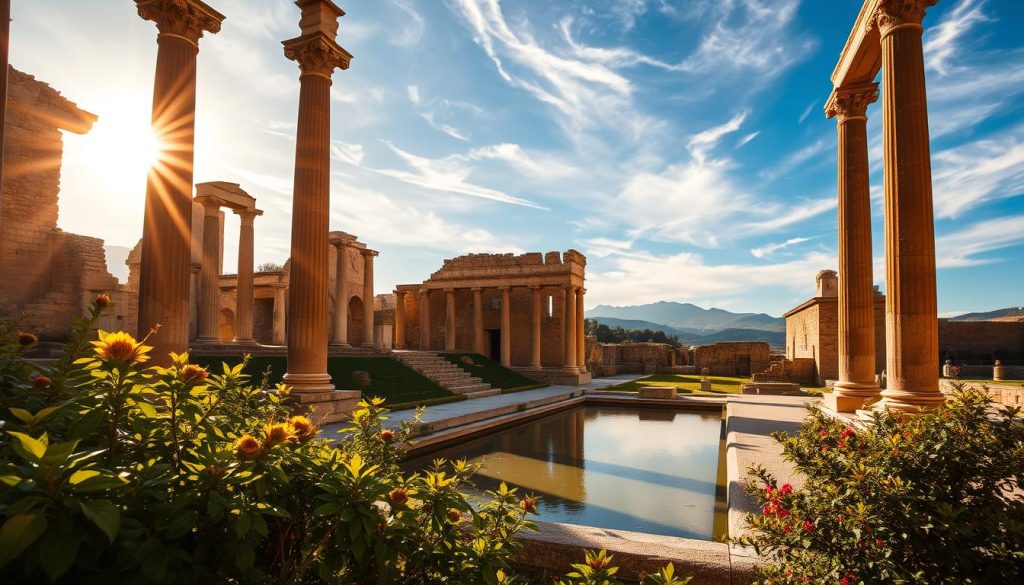
Ancient Ruins and Timeless History
This place is a treasure trove of history, dating back to the 8th century BCE. The well-preserved ruins tell stories of daily life, from bustling markets to grand villas. Walking through the streets, you’ll see remnants of a city that thrived before its tragic end.
The eruption of Mount Vesuvius in AD 79 preserved the site in ash, offering modern visitors a rare look into the past. Excavations began in the 18th century, revealing intricate mosaics, frescoes, and even ancient graffiti. Each corner of the city holds a piece of history waiting to be discovered.
Seasonal Temperature and Rain Patterns
The climate here varies throughout the year, influencing the best time to visit. Summers are hot, with temperatures often reaching 30°C (86°F). This is also the peak tourist season, so expect larger crowds.
Spring and autumn are ideal for a more comfortable experience. Temperatures range from 20°C to 28°C (68°F to 82°F), and rainfall is minimal. These seasons offer a balance of pleasant weather and fewer visitors.
Winter brings cooler temperatures, averaging around 6°C (43°F), and more rain. While it’s less crowded, some areas may be harder to explore due to wet conditions. Understanding these patterns helps you plan a trip that suits your preferences.
Pompeii, Italy: Best Months for a Weather-Savvy Trip
Timing your visit to this historic site can greatly enhance your experience. The weather and visitor trends vary throughout the year, so planning ahead ensures a smoother and more memorable trip.
Weather Overview for Each Season
Summer brings high temperatures, often reaching 35°C (95°F). While it’s a popular time to visit, the heat can make exploring the ruins challenging. Spring and fall offer milder conditions, with temperatures ranging from 20°C to 28°C (68°F to 82°F). These seasons are ideal for outdoor adventures.
Winter is cooler, with averages around 6°C (43°F), and more rain. While it’s less crowded, some areas may be harder to explore due to wet conditions. Understanding these patterns helps you choose the best time for your trip.
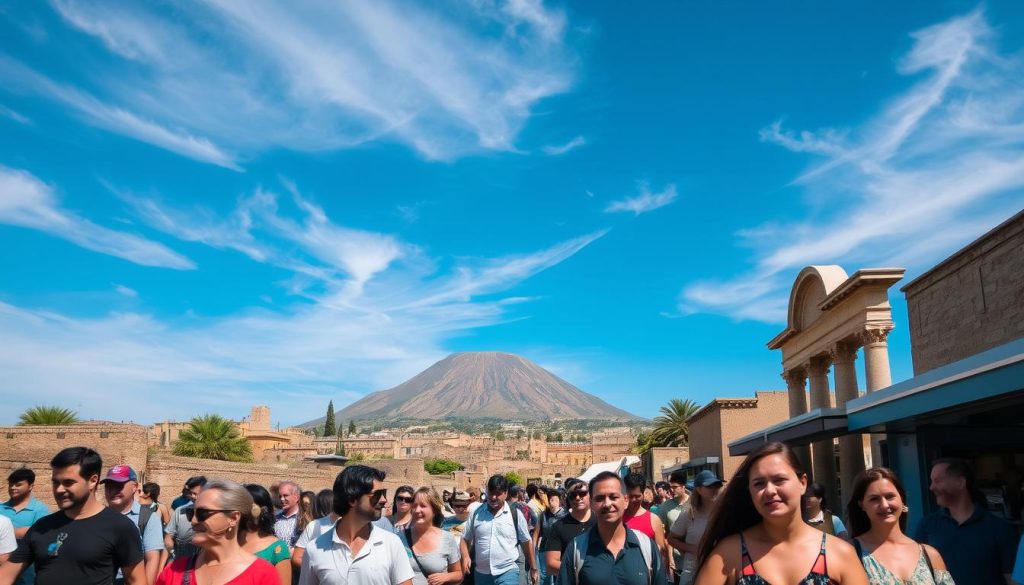
Visitor Trends and Best Times to Avoid Crowds
Summer is the peak tourist season, with large crowds filling the streets. If you prefer a quieter experience, consider visiting in spring or fall. These months see 30% fewer visitors, making it easier to explore the site at your own pace.
Winter offers the least crowded experience, but some attractions may have limited hours. Planning your visit during shoulder seasons ensures a balance of pleasant weather and fewer interruptions.
By aligning your travel dates with these trends, you can enjoy a more comfortable and immersive exploration of this ancient city.
Planning Your Visit Around Peak and Shoulder Seasons
The time of year you visit can shape your journey in unexpected ways. Whether you prefer bustling streets or quiet ruins, understanding the differences between peak and off-season travel is key. Each season offers unique advantages and challenges, so planning ahead ensures a trip tailored to your preferences.
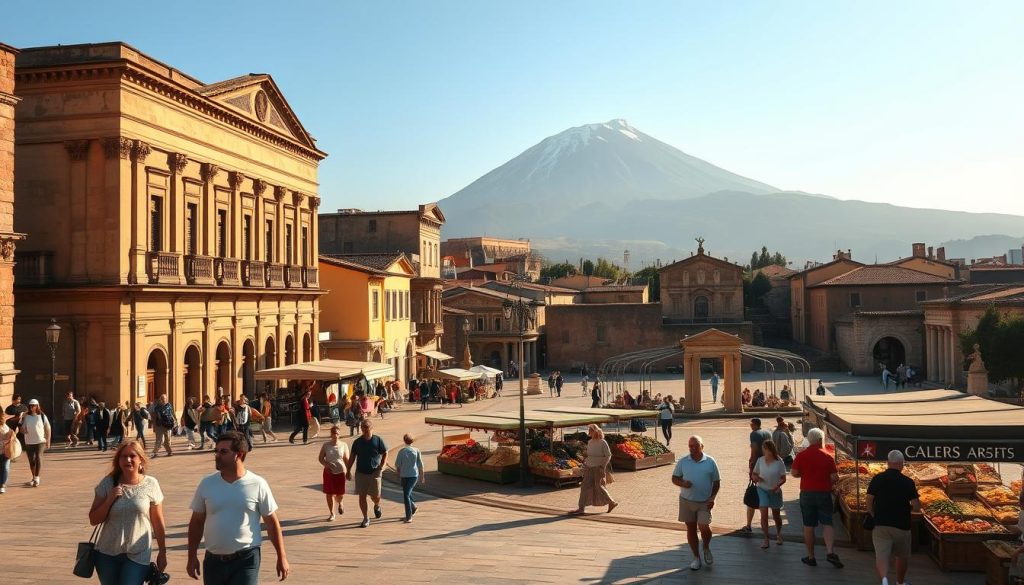
Pros and Cons of High Season Travel
Traveling during the high season, typically summer, comes with its own set of perks and drawbacks. The weather is warm, perfect for outdoor exploration, but temperatures can soar above 30°C (86°F). This is also when the city is most alive, with festivals and events adding to the vibrant atmosphere.
However, the high season also means larger crowds. Popular attractions often have long lines, and accommodations can be expensive. If you enjoy the hustle and bustle, this might be the right time for you. But if you prefer a quieter experience, consider other options.
Benefits of Off-Season and Shoulder Trips
Shoulder seasons, like spring and fall, offer a balance of pleasant weather and fewer tourists. Temperatures range from 20°C to 28°C (68°F to 82°F), making it ideal for exploring the site without the summer heat. You’ll also find lower prices on accommodations and flights, saving you money for other adventures.
Winter, while cooler and wetter, provides the most peaceful experience. With fewer visitors, you can take your time to explore the ruins at your own pace. Just be prepared for occasional rain and limited hours at some attractions.
| Season | Pros | Cons |
|---|---|---|
| High Season (Summer) | Warm weather, vibrant events | Large crowds, high prices |
| Shoulder Season (Spring/Fall) | Mild weather, fewer tourists, lower costs | Some attractions may have limited hours |
| Off-Season (Winter) | Peaceful experience, lowest prices | Cooler temperatures, occasional rain |
By weighing the pros and cons of each season, you can choose the best time to visit based on your travel style. Whether you thrive in the energy of peak tourist months or prefer the tranquility of off-peak trips, planning ahead ensures a memorable experience.
Insider Tips for a Comfortable Pompeii Adventure
Making the most of your trip to this historic site requires a bit of preparation and insider knowledge. With the right planning, you can enjoy a smooth and memorable experience. Here’s how to pack smart, navigate like a pro, and avoid common tourist pitfalls.
Smart Packing, Clothing, and Accessory Choices
Packing for your visit depends on the season and weather. Summers can be scorching, so lightweight clothing, a wide-brimmed hat, and sunscreen are essential. Comfortable walking shoes are a must, as the ancient streets can be uneven.
For cooler months, layering is key. Bring a light jacket or sweater for early mornings and evenings. A small backpack can carry essentials like water, snacks, and a map. Don’t forget a reusable water bottle to stay hydrated during your exploration.
Local Navigation and Avoiding Tourist Pitfalls
Navigating the site can be overwhelming, but a few tips can make it easier. Arrive early to beat the crowds and enjoy a quieter experience. Book tickets in advance to skip long lines and save time.
Use public transport like the Circumvesuviana train to reach the site efficiently. Once there, follow the marked paths to avoid getting lost. Be cautious of unofficial guides or overpriced services near the entrance. Stick to certified guides for a more informative tour.
| Tip | Details |
|---|---|
| Packing Essentials | Hat, sunscreen, comfortable shoes, water bottle |
| Best Time to Visit | Early morning or late afternoon to avoid heat and crowds |
| Transportation | Take the Circumvesuviana train to “Pompei Scavi/Villa dei Misteri” |
| Ticket Booking | Book online in advance to save time |
By following these tips, you’ll be well-prepared for a comfortable and enjoyable trip. Whether you’re exploring the ancient ruins or soaking in the history, a little planning goes a long way.
Exploring Pompeii’s Attractions and Cultural Experiences
Step into a world where ancient history comes alive through stunning ruins and vibrant cultural events. This historic site offers more than just a glimpse into the past—it’s a journey through time. From iconic landmarks to lively festivals, every corner tells a story waiting to be discovered.
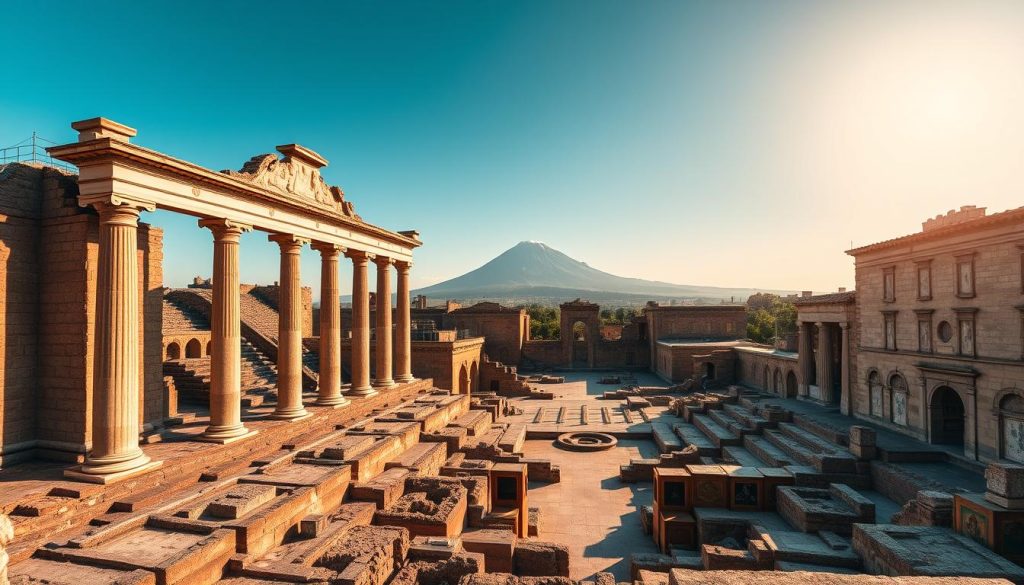
Must-See Ancient Sites and Landmarks
Your visit wouldn’t be complete without exploring the House of the Faun, one of the largest and most luxurious homes in the ancient city. Its intricate mosaics and grand architecture showcase the wealth and artistry of the time. Another highlight is the Villa of the Mysteries, known for its well-preserved frescoes that depict mysterious rituals.
The Forum, the heart of the city, was once a bustling center of public life. Here, you’ll find the remains of temples, markets, and government buildings. Nearby, the Forum Baths offer a glimpse into daily life, with their beautifully preserved frescoes and heating systems.
For a truly immersive experience, visit the amphitheater, the oldest surviving stone structure of its kind. Imagine the roar of the crowd as gladiators battled in this grand arena. Each site offers a unique window into the past, making your trip unforgettable.
Local Festivals and Unique Cultural Events
Beyond the ruins, the city comes alive with festivals that celebrate its rich heritage. In spring, the Pompeii Theatrum Mundi festival transforms the ancient amphitheater into a stage for performances, blending history with modern art. It’s a magical moment that bridges the past and present.
During the summer, the Pompeii Food and Wine Festival offers a taste of local traditions. Sample authentic dishes and wines while enjoying live music and cultural displays. These events provide a deeper connection to the city and its people.
Whether you’re exploring ancient ruins or joining in local celebrations, every moment here is a chance to immerse yourself in a world frozen in time. Plan your visit to make the most of these incredible attractions and experiences.
Travel and Budget Guidelines for Your Italian Getaway
Planning a trip to this historic destination doesn’t have to break the bank. With the right strategies, you can enjoy a memorable experience while staying within your budget. From booking flights to managing daily expenses, here’s how to make the most of your visit.
Booking Strategies and Cost-Saving Tips
Booking your trip in advance can save you both time and money. Websites like Skyscanner and Booking.com often offer early bird discounts. If you’re flexible with your time, last-minute deals can also be a great way to save.
Consider traveling during shoulder seasons, like April to May or September to October. These months offer pleasant weather and fewer crowds, making it easier to explore the site without overspending.
“Traveling off-peak not only saves money but also allows for a more relaxed and immersive experience.”
Transport, Accommodation, and Daily Spending Advice
For transport, commuter trains from Naples to this historic city are both affordable and efficient. A one-way ticket costs around €2.50, making it a budget-friendly option. Book your tickets online to skip the queues and save time.
Accommodation options range from budget hostels to mid-range hotels. Platforms like Hostelworld and Booking.com offer competitive rates, especially if you book early. Staying in nearby towns like Sorrento can also reduce costs while providing easy access to the site.
When it comes to daily expenses, opt for local dining spots over tourist-centric restaurants. Look for menú del giorno lunch specials, which often include a full meal at a fraction of the cost. Public transport and free attractions like the Amalfi Coast can also help stretch your budget.
| Expense | Cost-Saving Tip |
|---|---|
| Flights | Book early or look for last-minute deals |
| Accommodation | Use platforms like Hostelworld for budget stays |
| Transport | Take commuter trains and book tickets online |
| Dining | Choose local spots with lunch specials |
| Attractions | Visit free sites like the Amalfi Coast |
By following these tips, you can enjoy a well-planned and budget-friendly trip. Whether you’re exploring ancient ruins or savoring local cuisine, smart planning ensures a stress-free and enjoyable experience.
Conclusion
Planning your trip with the weather and crowds in mind ensures a more enjoyable experience. Visiting during spring or fall offers mild temperatures and fewer tourists, making it easier to explore the site at your own pace. Summer, while vibrant, can be hot and crowded, while winter provides a quieter atmosphere despite cooler conditions.
By following the tips shared in this guide, you can make the most of your visit. Book tickets in advance, pack smartly, and arrive early to avoid long lines. These small steps can significantly enhance your trip and allow you to fully immerse yourself in the history of this ancient city.
Whether you’re drawn to the ruins or the cultural events, timing your visit wisely ensures a memorable and cost-effective experience. With the right preparation, you’ll leave with a deeper appreciation for this incredible site.
The above is subject to change.
Check back often to TRAVEL.COM for the latest travel tips and deals.
Here are some Tours & Sightseeing suggestions that might pique your interests!
